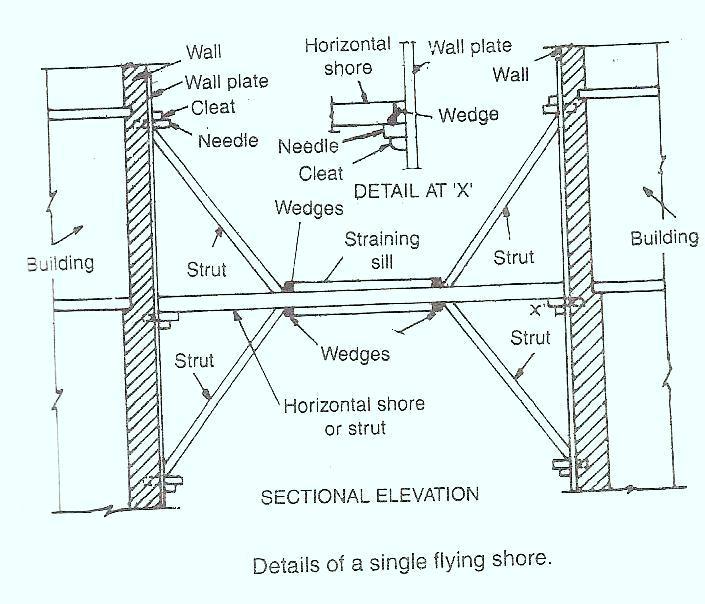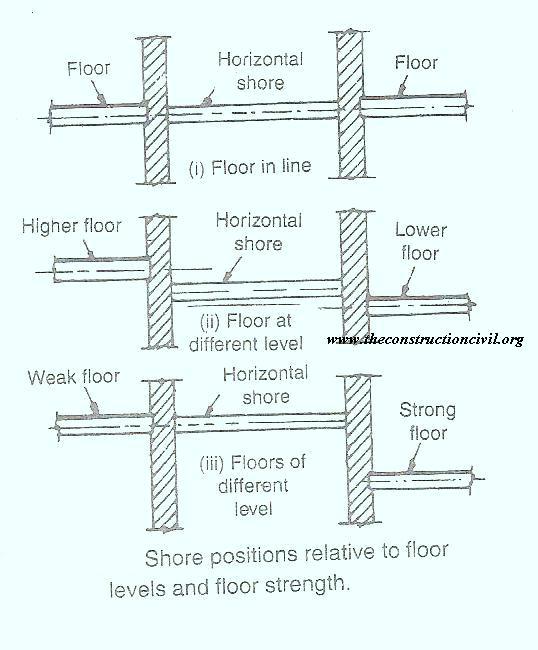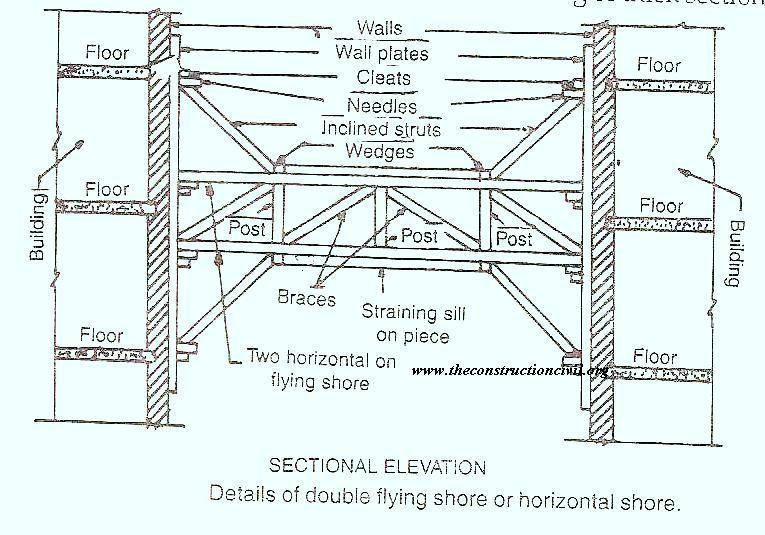Flying or Horizontal Shores
Flying or Horizontal Shores, in this type horizontal supports are provided for supporting temporarily the parallel walls of the two adjacent buildings, which may tend to collapse or damage when one of the intermediate buildings has to be pulled down and rebuilt see in the below figure.
Such conditions occasionally arise when one of the intermediate buildings from a series of buildings standing side by side is either required to be reconstructed or has collapsed due to some reason.
A single flying shore consists of wall plates, struts, straining pieces, horizontal shore (or, horizontal strut), needles, cleats and wedges, as shown in the above image. Like inclined shores, in this system also, the wall plates are secured against the walls by means of needles and cleats. The horizontal shores is held in position by wedges, needles and cleats to the wall plate as shown at section (x). The inclined struts are supported by the needles at their one end and straining sill at the other end. Straining sill, in turn, is spiked to the horizontal shore.
The details of a simple raking shore (with three rakers, known as treble raking shore) are shown which can be employed up to 3-storey heights.
(i) During reconstruction of the intermediate building, the flying shores temporarily take up the position of the dismantled building.
(ii) The centre-lines of flying shores and struts; and flying shore and walls, should meet at the floor levels. If the floor levels of two buildings are different or their strengths are different, then shore positions should be provided as shown in the below image.
(iii) The maximum distance of about 10 metre between the parallel walls can be supported by single flying shore. For a distance more than 10 m, a double flying shore, having a trussed form work as shown in Fig. 24.29, is employed.
(iv) The flying shores are kept in position so long as the adjacent buildings are made stable by constructing the building to a sufficient height.
(v) Unlike the inclined shoring in this type, only one set of shoring is employed to strengthen the two adjacent walls.
(vi) A larger factor of safety should be adopted in design analysis of flying shores because of uncertainty of actual loads. For shores to be more effective, the struts should be inclined at 45°, if possible.



